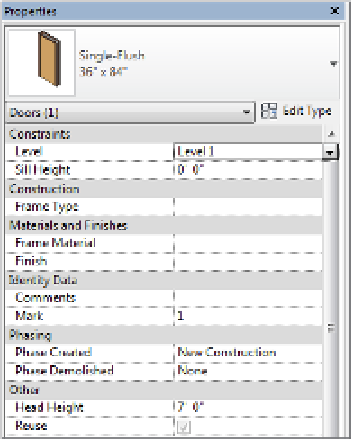Graphics Programs Reference
In-Depth Information
7.
Type or Instance: Set to Instance. This setting controls the uniqueness of the parameter
itself. Both parameter types can be mixed within a given family. In this example, use an
instance parameter because you want to designate whether something is reusable on an
element-by-element basis.
See Chapter 2, “Applying the Principles of the User Interface and Project Organization,”
for more information on type and instance parameters.
8.
Group Parameter Under: Set to Green Building Properties.
This setting is an organization tool. When you open your element properties, depending
on how many parameters you add, you can develop quite a long list. This tool allows you
to group new parameters into any given category.
9.
In the list of categories, check the boxes for Doors, Furniture, and Windows.
Categories is the list of element types in which this new property will appear. This
is where you define all the category types you'll associate with the new parameter.
Category selections are flexible. If you decide you need to change categories after you cre-
ate your parameter, you can easily come back to the Project Parameters tool and modify
your selection.
10.
When you finish, click OK. This will take you back to the Project Parameters dialog box,
where you can choose to add another parameter or, in our case, just click OK to exit
completely.
Back in the model, you can now select a door (because it is one of the categories you chose)
and see that you have added a Reuse parameter in the form of a check box to the bottom of the
Properties list (Figure 18.47).
Figure 18.47
he reuse param-
eter in the family















